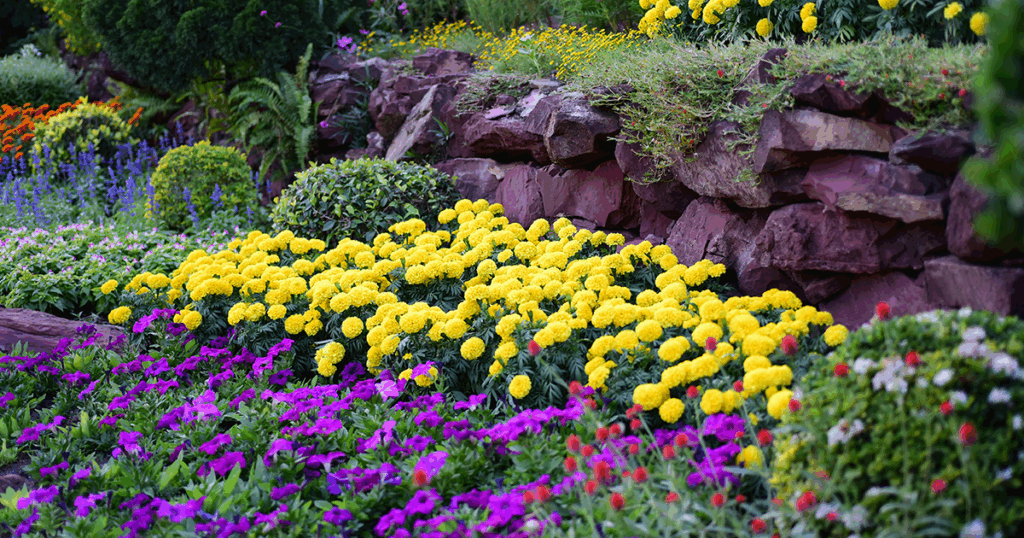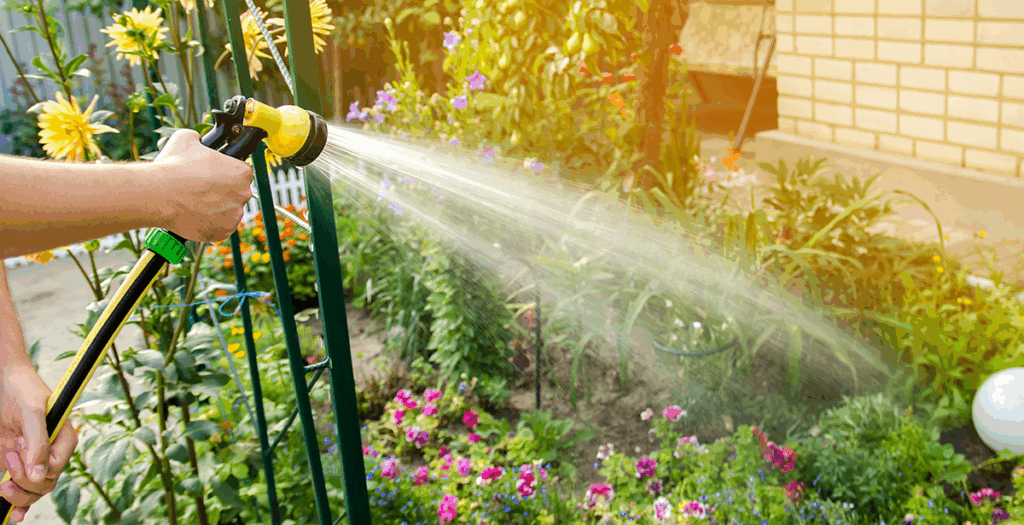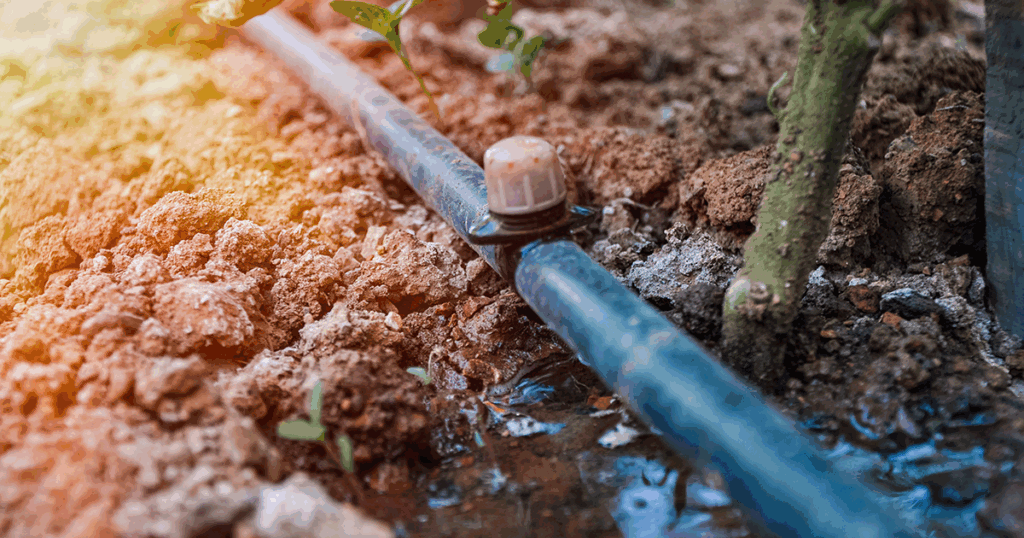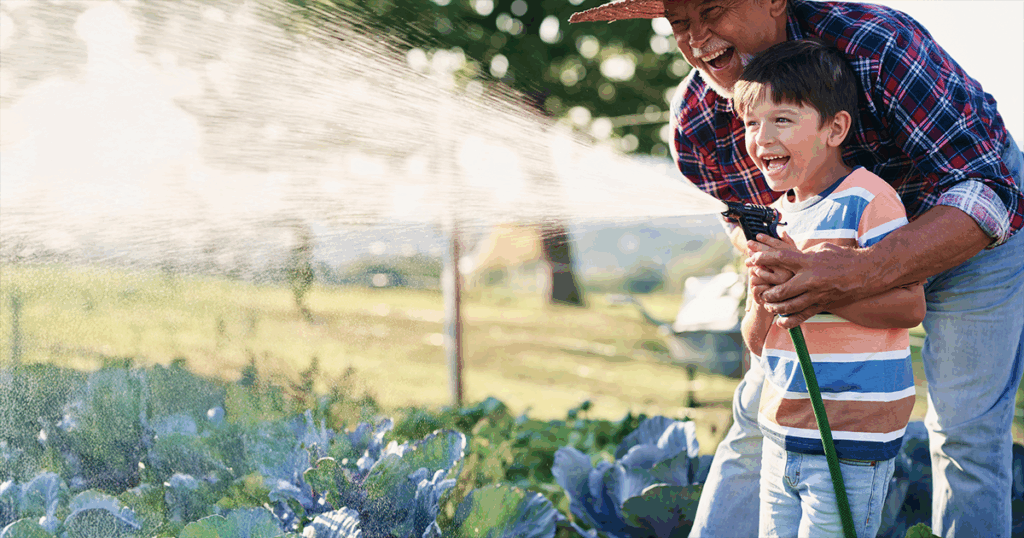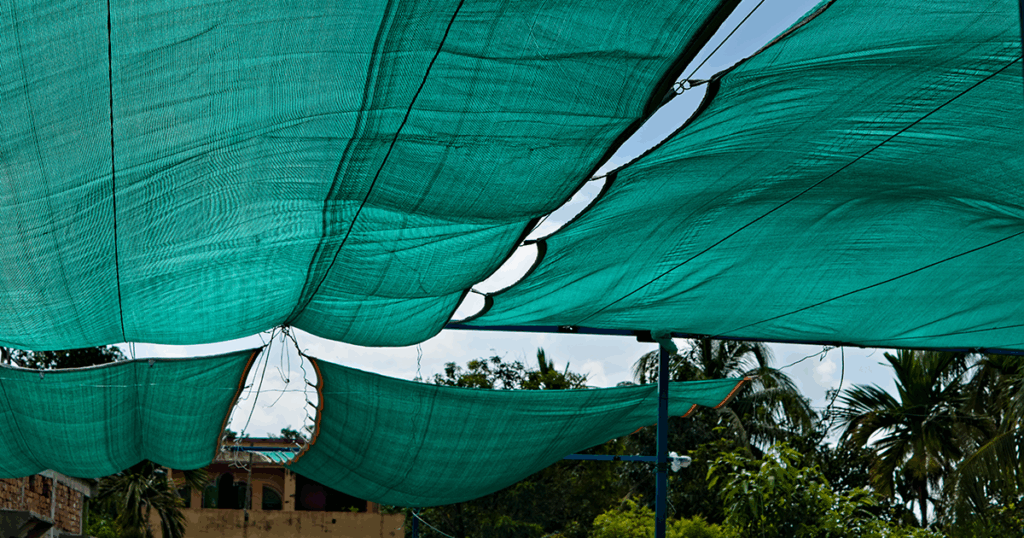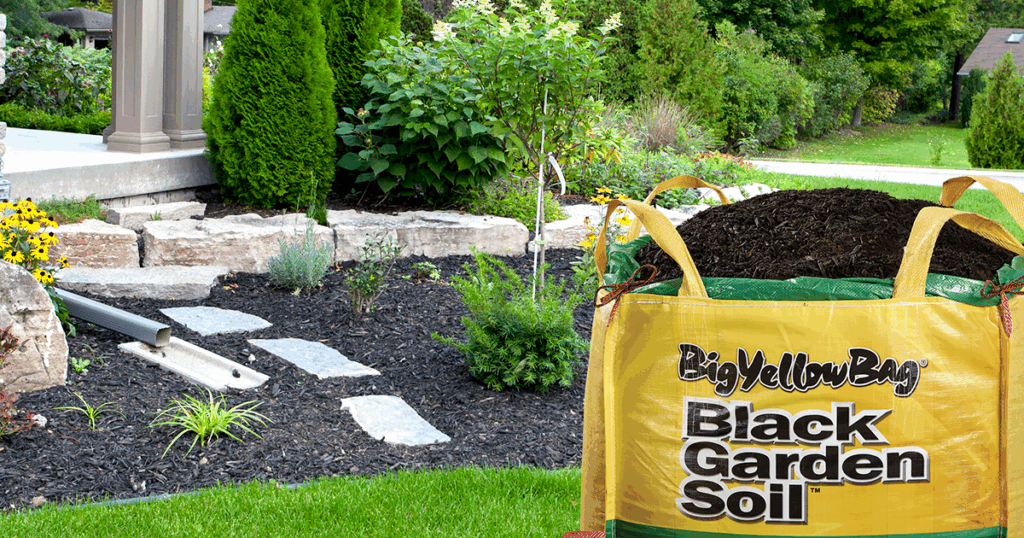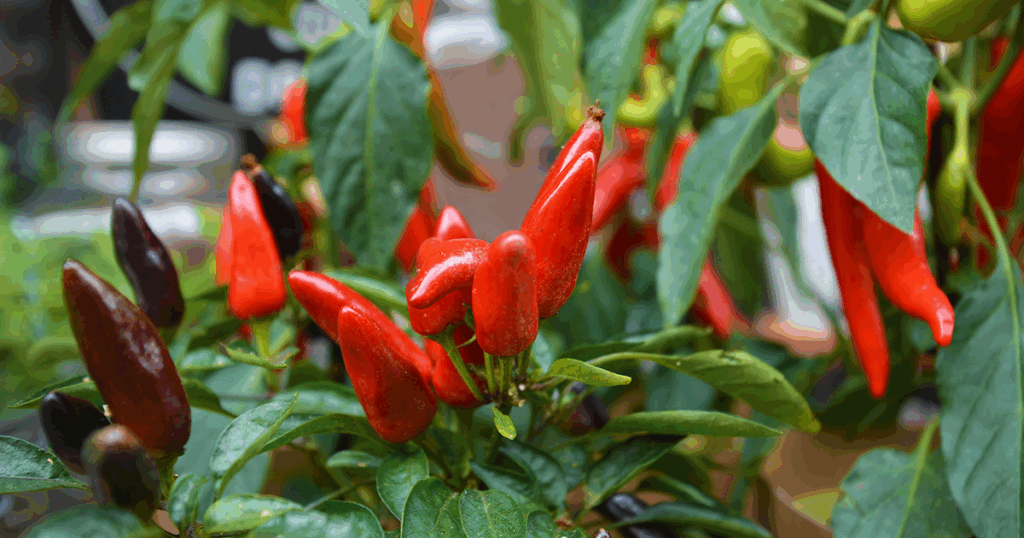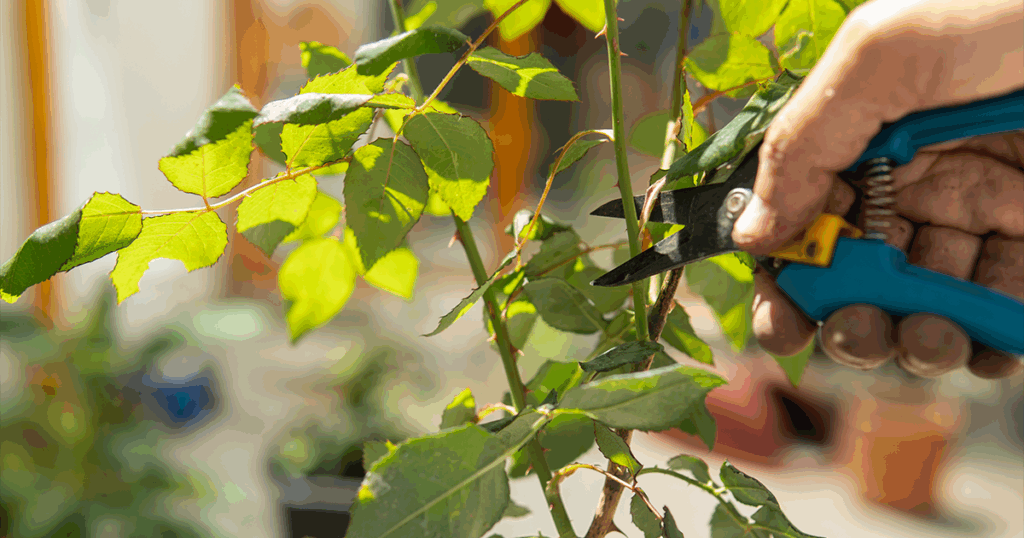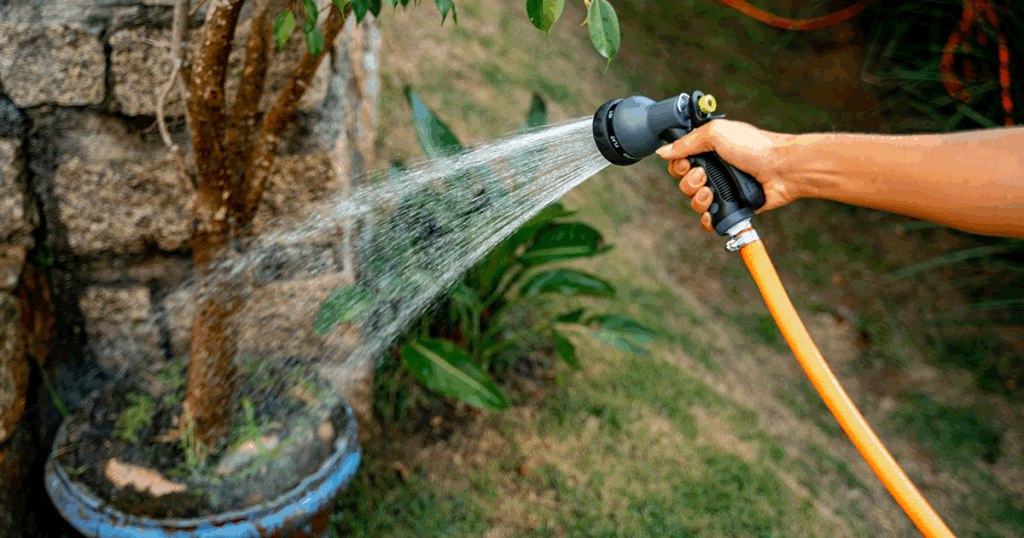Beat the Heat: Proven Strategies to Protect Your Garden
Learn all about proven strategies for protecting your garden during the scorching summer months and beat the heat with BigYellowBag!
It seems like only yesterday we were complaining about the never-ending winter conditions and praying for spring weather to take hold! Now spring has come and gone, and we’re heading into the dog days of summer. Seasoned gardeners across North America know the struggle… Hot weather, lack of rain, and dry soil are all hurdles you must conquer to grow a high-performing summer garden. Worried about your wilting vegetables? How about those brown patches in your flowers? Has your water bill been increasing? We’re here to help you beat the heat! This article outlines several practical strategies for maintaining a lush, healthy garden all summer long.
Smart Watering Techniques to Help Beat the Heat!
Deep, Infrequent Watering is the Only Way
The summer sun is out in full force, and as much as your plants are loving all the UV rays, these conditions can really dry your garden out. Some less experienced gardeners think it’s advantageous to keep their garden consistently moist. The logic is sound… “If the sun keeps drying out my soil, my plants will die! So I better keep the soil moist all the time!”. But unfortunately, frequent, shallow watering can actually be very detrimental to your garden’s performance! If there’s always moisture around the surface of your garden, your plants won’t reach their roots deep into the ground. Roots are always seeking out moisture in the soil.
If the moisture is constantly supplied at the surface, those roots won’t reach down, and you’ll end up with less robust plants. Less frequent, DEEP watering sessions are the best way to maintain your garden’s moisture levels. Now that’s not to say you want your plants to be floating in your garden beds! But try and give your garden a really good soaking so that the moisture will trickle down, and get your plant roots reaching deep into the soil. A good rule of thumb is to water slowly, but for longer. Avoid wetting down foliage by watering close to the base of your plants. Constantly wetting down foliage can lead to diseases.
Timing for Watering is Crucial to Beat the Heat!
Timing for these deep, infrequent watering sessions is also important. Do your best to get the garden beds thoroughly watered in the morning (6-8 AM). This is the golden window for watering. If you can ensure you water deeply early in the day your plants will stay hydrated all day long. It may not look like your garden is staying hydrated throughout the day, but that’s okay! You don’t want the surface of your garden soil to be consistently moist, as we previously discussed.
You’ll also want to be well aware of the climate zone that you reside in! Different vegetables, perennials, annuals and grasses will have different water requirements depending on where you live. Research your plant hardiness zone and the varieties of plants you’re choosing for your gardens. Having a better understanding of your climate and the plants you’re growing will help to fast-track your garden to success.
Canada’s Plant Hardiness Zones
Use the Tools You Have on Hand!
There are also plenty of tools and gadgets you can use to ensure your summer watering regime is as effective as possible. Soaker hoses have small perforations along their entire length. Especially if you have a big garden, these hoses can reduce the labour required for morning watering immensely. Running these hoses throughout your garden can make watering as simple as turning your garden tap on and off for a set amount of time. On that note, there’s nothing wrong with good old-fashioned sprinklers or watering cans! Use the tools you have at your disposal.
Regardless of the watering technique, you’re going to want to carefully measure the amount of water you’re putting down so that you can dial in the right amount your garden needs, given the conditions. The rain gauge is the single most important piece of any garden watering arsenal. If you don’t have a rain gauge, empty tin cans make excellent substitutes. Make a couple of marks with a permanent marker on the inside of your can to mark the important water intervals. The amount of water will differ depending on your specific regional and species requirements, but a good rule of thumb is to aim for about an inch of water every week.
Signs of Proper Garden Hydration
Okay. That’s all well and good, but how do I tell if my garden is properly hydrated?
Typically, a thorough deep watering will penetrate your garden soil down about 8 inches. If you have an empty corner of your garden, run a little test there one morning using whatever watering technique you’ve chosen with your rain gauge out. Keep watering until things look thoroughly saturated and use a screwdriver or other implement to check the soil moisture at a depth of about 8 inches. Once the water has penetrated down to that depth, your garden should be in great shape to take on the coming heat of the day.
Other signs that your garden is properly hydrated will start to appear as you start to dial in your garden watering regime. Your plants will start growing stronger and healthier, and you’ll notice greener, more robust flowers and vegetables. Overall garden performance will improve, and you’ll know that you’re on the right track in terms of watering. If you’re overwatering, you may start to see moss or algae starting to form on your garden soil. Back off watering slightly when you start to see these effects. If you’re under-watering, your plant performance will be compromised, and the damage can be irreparable if left unattended for too long.
Protecting Your Plants From Heat Stress
Recognizing Heat Stress Symptoms and How to Beat the Heat!
Many experienced gardeners know the tell-tale signs of heat stress in their plants. Wilting leaves, leaf scorch, stunted growth, and flower dropping are all signs that your plants are too hot! As much as watering is essential to proper plant performance, there’s only so much that water can do when your plants are baking in the sun. Luckily, there are plenty of strategic shade solutions to help cool down your garden’s environment. Shade cloth is used extensively in agriculture to help protect more delicate crops like ginseng from the sun. Set up a light-weight frame around your overexposed garden using 1×2’s or whatever you have around the yard. Lay the shade fabric over the top of the frame and use wood staples to secure it. Trim any excess and get your sun-baked garden back on track.
We talk a lot about companion planting in this blog, and that’s because it’s such a powerful tool to solve so many garden issues. If you can’t get a shade structure put up, consider simply using the plants you chose to help shade the rest of your garden. Sunflowers are a popular, beautiful addition to your garden that can help shade your garden from the intense summer sun. Be careful what plants you put beside them, though! Sunflowers release allelochemicals that can stunt the growth of some nearby plants, like potatoes and beans. Always do thorough research before choosing your companion plants.
BigYellowBag Mulch Will Help Regulate Your Garden’s Temperature
Another invaluable tool in your summer-heat-fighting arsenal is BigYellowBag mulch. High-quality mulch not only breaks down over time, adding nutrients back into your garden, but when used properly, it will also help to keep your garden soil cool in the summer and warm in the spring and fall. It’s a very effective insulator for your garden soil. Regardless of the type of mulch you use, always be sure to spread it at the appropriate depth. In order to have those insulating benefits, you’ll want to have about 3 inches of mulch throughout your garden. Mulch also helps your garden retain moisture throughout these scorching summer days.
Be aware, BigYellowBag Mulch is NOT available at every BigYellowBag location. Reach out to your local supplier and ask if they also provide mulch!
Selecting Heat-Tolerant Plants Can Help!
Many new gardeners across North America will start to see many of the heat-stress and drought symptoms we’ve discussed so far in this article. Hopefully, they can mitigate these detrimental effects of the heat using the strategies we outlined. But heading into next year, it may be worthwhile considering more heat-tolerant plants to fill your summer gardens with. If you like spicy foods, the summer heat is excellent for hot peppers like jalapenos and serranos. The sweeter pepper varieties also love the heat, like banana peppers and pimentos! Eggplant is also well known for being a robust vegetable that thrives in summer heat, as well as zucchini and yellow squash.
On the decorative side of things, keep your eyes out for black-eyed susans and purple verbena. These annuals are known for their ability to beat the heat. (Note: Purple verbena can be both an annual and a perennial depending on where you live!) As for heat-tolerant perennials, you’re going to want to look into sedum varieties, rockin’ salvias, and bearded irises. Remember, these are only a few examples of heat-tolerant plants, and you should always do plenty of research on plant varieties in your area before planting anything. Make sure the heat-tolerant plants you select are well suited to your plant-hardiness zone!
Timing Garden Activities to Beat the Heat!
In the heat of summer, gardening tasks are best completed in the early morning or the evening. Not only are these better times for your plants when the temperatures are more moderate, they’re also better times for us, the gardeners! It’s almost impossible to be productive outdoors during the hottest hours of the day. Reserve your garden work for when temperatures are cooler and the sun is lower in the sky. For pruning, it’s best to start clipping after the morning dew has evaporated and the foliage has had a chance to dry out. This is to mitigate the possibility of diseases that can be introduced through pruning. Pruning a dry plant is much better than pruning a wet one. Also, pruning in the morning will allow your plant to recover from the pruning stress throughout the day.
Ensure Your Garden Soil Retains the Right Amount of Moisture
We’ve already talked about the importance of mulch for improving moisture retention, but it’s worth reiterating. Mulch is an excellent defender for your summer gardens. Just remember to spread it thick enough (about 3″) to maintain the insulation and moisture retention benefits. The best way to ensure your summer garden is set up for success is by providing your plants with the best possible spring start with BigYellowBag Black Garden Soil. Refreshing your garden soil in the spring with BigYellowBag will pay dividends to your summer garden! We’ve engineered our Black Garden Soil to have the perfect amount of moisture retention, while still allowing air and moisture to move through the soil gradually. Learn all about our Black Garden Soil here!
Beat The Heat with Container Gardening!
Do you have pots or planters going in your backyard? Be sure to apply these tips to help “beat the heat” for those plants as well! It’s typically a little easier to find the sweet spot of sun exposure and shade with potted plants, since you can move them around your yard to find the perfect “goldilocks” zone. You don’t want your plants to get too much sun, or too little… You want it to be JUST right. If you have a more permanent planter, it should be fairly simple to construct a small sun shade as we previously discussed.
Be careful with watering your potted plants! It can be difficult to achieve the right moisture balance with these kinds of setups, because when there’s less soil, there will be less moisture retention and easier evaporation. On extremely hot days, you may have to water your potted plants twice, but be sure to monitor your soil moisture before doing so. Only water when your soil is dry and it’s required.
Put it All Together to Beat The Heat in 2025!
Maintaining summer gardens can be challenging, but we hope these tips will help your summer gardens thrive! Always remember the three key pillars to beat the heat: smart watering, heat stress protection, and moisture retention. If you focus on these three aspects, you’ll be setting your summer garden up for success. If you want remarkable results, the best way to achieve those results is through consistent care. Make gardening a part of your daily routine! You won’t only see results in the garden, but you’ll also see many benefits to your overall health! Recent studies show that daily gardening and time spent outside can help reduce stress and improve overall health. Check out this article from the Mayo Health Clinic, all about the various health benefits of gardening.
(As if you needed any more reasons to spend time in the garden…)
Start implementing these summer gardening strategies today and start to see some major improvements in your summer gardens! Here at BigYellowBag, we’re in the business of making people happy. We hope those vibrant summer blooms, or fresh summer vegetables, put a smile on your face! 🙂

